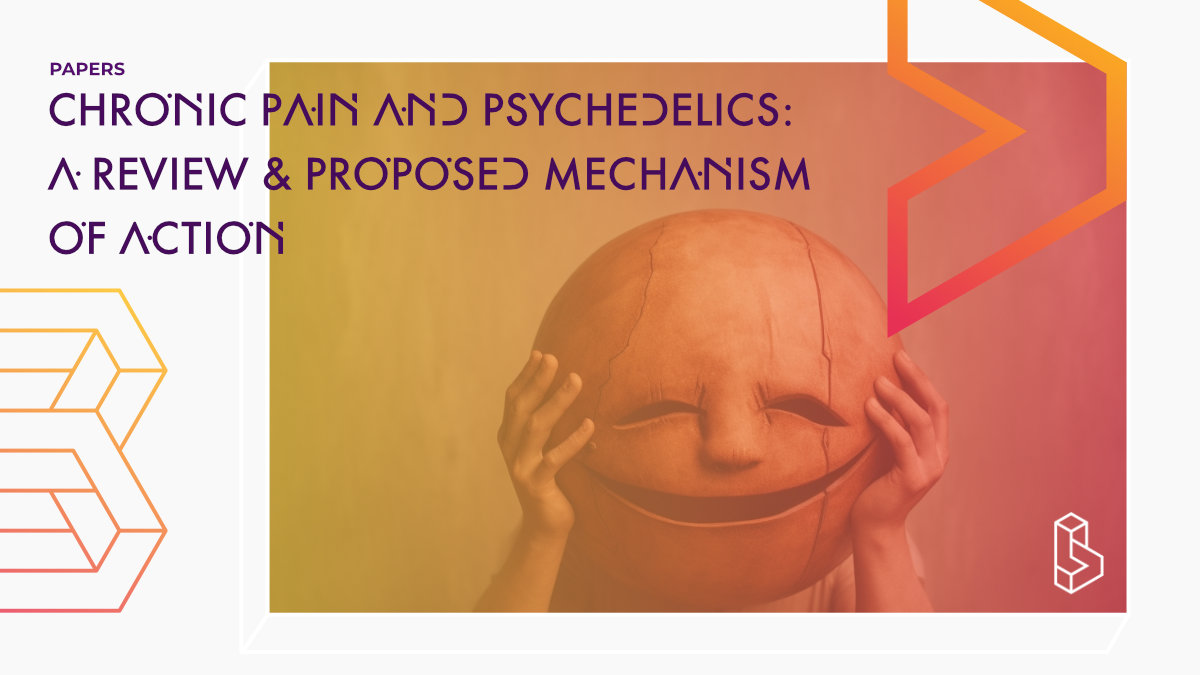This review (2020) investigates the (limited) research on psychedelics for chronic pain and notes the limitations op opioids (and the current epidemic of use).
Abstract of Chronic pain and psychedelics
“The development of chronic pain is a complex mechanism that is still not fully understood. Multiple somatic and visceral afferent pain signals, when experienced over time, cause a strengthening of certain neural circuitry through peripheral and central sensitization, resulting in the physical and emotional perceptual chronic pain experience. The mind-altering qualities of psychedelics have been attributed, through serotonin 2A (5-HT2A) receptor agonism, to ‘reset’ areas of functional connectivity (FC) in the brain that play prominent roles in many central neuropathic states. Psychedelic substances have a generally favorable safety profile, especially when compared with opioid analgesics. Clinical evidence to date for their use for chronic pain is limited; however, several studies and reports over the past 50 years have shown potential analgesic benefit in cancer pain, phantom limb pain and cluster headache. While the mechanisms by which the classic psychedelics may provide analgesia are not clear, several possibilities exist given the similarity between 5-HT2A activation pathways of psychedelics and the nociceptive modulation pathways in humans. Additionally, the alterations in FC seen with psychedelic use suggest a way that these agents could help reverse the changes in neural connections seen in chronic pain states. Given the current state of the opioid epidemic and limited efficacy of non-opioid analgesics, it is time to consider further research on psychedelics as analgesics in order to improve the lives of patients with chronic pain conditions.”
Authors: Joel P. Castellanos, Chris Woolley, Kelly A. Bruno, Fadel Zeidan, Adam L. Halberstadt & Timothy Furnish
Summary of Chronic pain and psychedelics
Psychedelic substances have been used in different cultures for centuries, but have only been recently stigmatized in the USA and worldwide. Recent research has demonstrated the potential benefit of psychedelics for many psychiatric disorders, including depression, anxiety and addiction, as well as potential antinociceptive effects in chronic pain conditions.
Find this paper
Chronic pain and psychedelics: a review and proposed mechanism of action
http://dx.doi.org/10.1136/rapm-2020-101273
Paywall | Google Scholar | Backup | 🕊
Cite this paper (APA)
Castellanos, J. P., Woolley, C., Bruno, K. A., Zeidan, F., Halberstadt, A., & Furnish, T. (2020). Chronic pain and psychedelics: a review and proposed mechanism of action. Regional Anesthesia & Pain Medicine, 45(7), 486-494.
Study details
Topics studied
Fibromyalgia
Pain
Headache Disorders
Study characteristics
Literature Review

